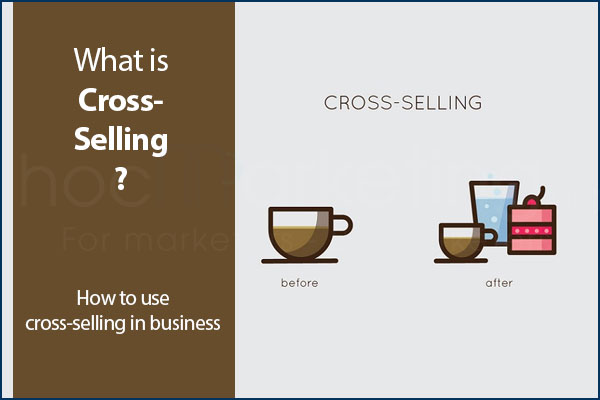
What is Cross-selling? How to use cross-selling in business

Cross-selling is a technique that many businesses use to increase their revenue. It's often used by retail stores and restaurants, but it can be applied to any business as long as you have the necessary data available. In this blog post we'll explore what cross-selling is and how to use it in a business.
Cross-selling is a technique that many businesses use to increase their revenue. It's often used by retail stores and restaurants, but it can be applied to any business as long as you have the necessary data available. In this blog post we'll explore what cross-selling is and how to use it in a business.
What is Cross-selling?
Cross-selling is a marketing technique that involves trying to get customers to buy related products when they are in the purchasing process.
What does this mean? Let's say you have a retail store which specializes in selling motorcycles and parts for these motorcycles. You might suggest that when a customer comes into the store to buy a new motorcycle, they also purchase insurance for their new ride. This is cross-selling at work!
Benefits of cross-selling
Cross-selling brings to a business many benefits
Cross-selling is a good way to increase revenue
When done correctly, cross-selling is a good way to increase revenue. Customers can be given choices that they would most likely enjoy or need, and it increases the odds that they will make a purchase from you instead of somewhere else.
It increases customer satisfaction
The practice of cross-selling is a good way to increase customer satisfaction because it gives the customers different options based on what they're already doing. This is especially helpful if you have multiple products, such as one type of motor oil for two types of cars -- by selling an oil that's compatible with both, you make sure that your customer isn't wasting money on a product they won't be able to use!
It's a good way to increase customer loyalty
If you can sell a customer on a new product, chances are they'll be more likely to buy from you again. This is especially true if the product went above and beyond their expectations of quality or usefulness, which is why it's important that your products always meet this standard!
Major types of cross-selling
Cross-selling can be categorized into many types:
Complementary items
Complementary items are products which have a high chance of being purchased alongside each other. For example, if you're going to Starbucks you might buy a bagel or pastry with your coffee purchase. Complementary items are good for cross-selling because they often go hand in hand -- nobody buys a motorcycle and doesn't also need gas, so offering the customer gas when they're buying a bike is a good way to get them to buy.
Popular items
Popular items are products which most of your customers want to buy. They can be called as best sellers. For example, if you're selling shoes, you can offer customers your best-selling T-shirts.
Promotional items
Promotional items are products which are given at a discounted price or are sold for free when they are purchased alongside another specified item. For example, if you're selling laptops, you can offer your customers free mouse pads when they buy their laptop. Many customers do not want to lose chances to buy promotional items.
New releases
New releases are products which are newly published. For example, if you're selling books, you can offer the latest published editions of your book to attract customers.
How to Use Cross-selling in Your Business
Business can conduct cross-selling by following these steps
Step 1. Analyze your customer base
Before you can apply any type of cross-selling technique, you'll need some information. Make a table with the different types of people who visit your store or restaurant every month, and then list their main reason for coming in. Then, list all the products each person might purchase while at your store. This will give you an idea of what types of products to cross-sell!
Step 2. Be mindful of the buying process
Remember that your customers are people who have needs , but don't make them feel like they're being sold to -- make it a smooth transition from the customer's need to your product, and always speak highly of anything you recommend.
Step 3. Use cross-selling as an opportunity to upsell
Some customers may want a more expensive version of your product or a related product that features special materials or designs. If your customer is willing to spend the money, then by all means offer them the chance to upgrade!
Step 4. Keep an open mind about what you sell
You may be known for selling one or two types of products, but if something new comes along that works well with your existing product line, try selling it anyway! The key is to see your store or restaurant as a business, not just an establishment that only sells one type of product.
Step 5. Let your employees know which products you want to cross-sell
Good communication is key in running any successful business, so make sure that all the people who work with you are on board with what kind of products they're selling. This also means that if someone has knowledge about a new product you haven't heard of, then let them tell you -- keeping your employees happy will make them more likely to go above and beyond for your customers!
Conclusion
Cross-selling is a technique businesses use to increase revenue by selling more than one product at a time. Cross-selling can be done in many different ways, so it's important that you analyze your customers and the buying process they go through before deciding what type of cross-sells would work best for them. Using cross-sale techniques will help ensure all your current sales channels remain operational while also opening up new opportunities for growth!














